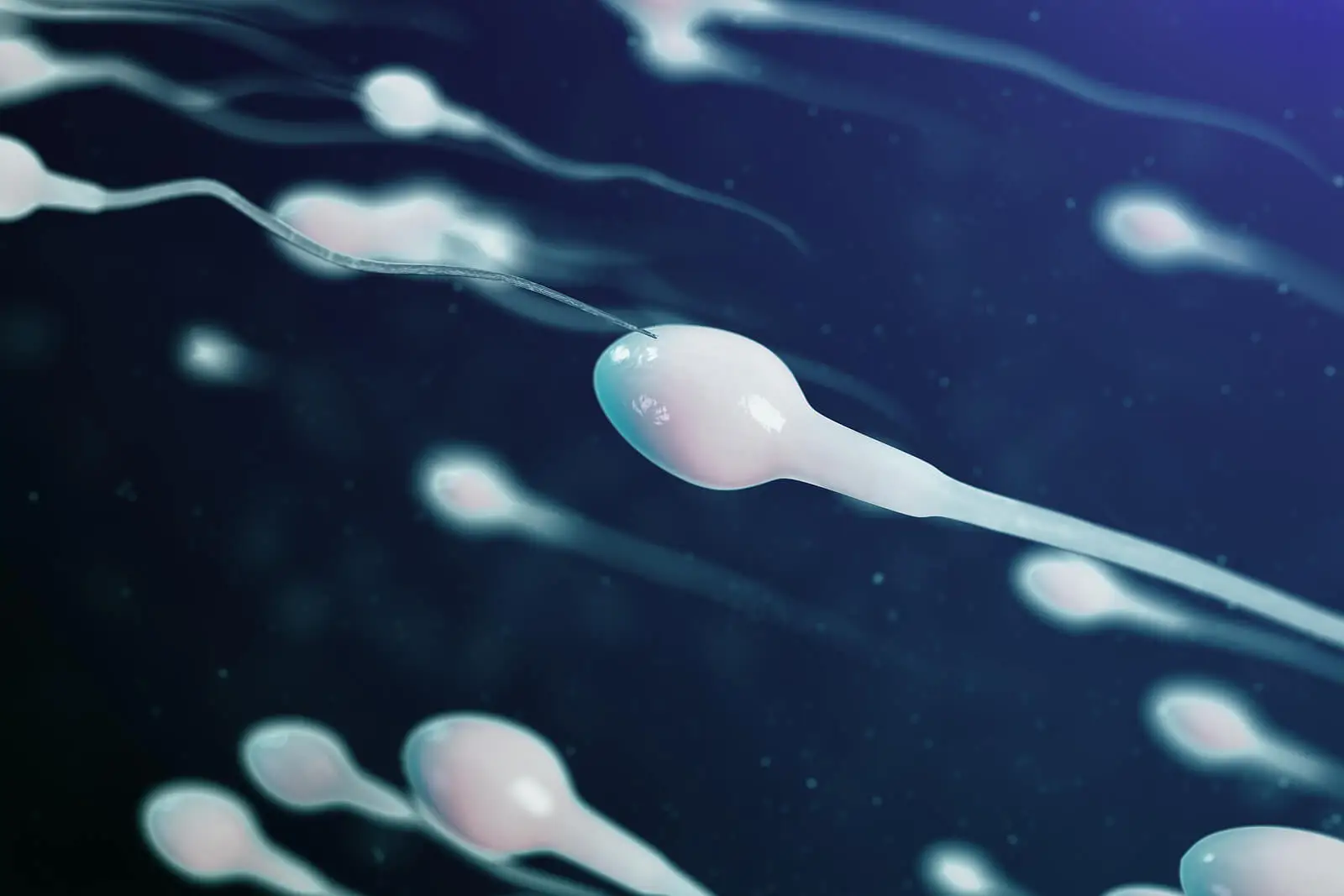Spermatocele: Causes, Symptoms, Diagnosis and Treatment


Reviewed and approved by the doctor Leonardo Biolatto
The male reproductive system is composed of multiple ducts where both sperm and semen are formed and transported. All these ducts can contain cystic or neoplastic abnormalities that alter their structure. Do you want to know what a spermatocele is? Read on!
A spermatocele is nothing more than a soft and painless cyst located in the epididymis. The latter is a duct in the upper and posterior part of the testicle, in which newly formed sperm mature and are stored.
Multiple studies affirm that it is a common problem, especially in older men. However, it doesn’t usually cause any relevant clinical manifestations and its diagnosis is usually made by chance.
Causes
The epididymis is formed by microscopic tubes that transport the newly formed spermatozoa. It’s possible that obstruction of one of these ducts is the cause of spermatocele. However, scientists have not yet determined the precise origin.
Another possible cause of this type of cyst in a child is genetic alterations, although this is a rare malformation in the first years of life. The risk factors for spermatocele are also not entirely clear.
The use of a drug called diethylstilbestrol during pregnancy is thought to increase the risk. This drug was prescribed to prevent miscarriages and other complications, but its legal prescription was discontinued in 1971 because of its association with vaginal cancer.

Symptoms of a spermatocele
Spermatoceles do not cause obvious clinical manifestations in most cases. They’re painless cysts, which maintain a stable size and aren’t cancerous.
However, there are cases where spermatoceles increase in size considerably. In these cases, they may cause some signs, such as the following:
- Pressure at the base of the penis
- Redness of the scrotum
- Swelling behind or over the testicle
- Discomfort or pain in the affected testicle
- Possible enlargement of the scrotum
- Feeling of heaviness in the affected testicle
It is important to keep in mind that a spermatocele doesn’t usually cause alterations in ejaculation or pain in the penis. Therefore, if you suffer from these symptoms, it’s advisable to see a specialist as soon as possible.
Read more: 18 Interesting Facts You Probably Didn’t Know about Semen and Sperm
Diagnosis
The easiest and quickest way to detect a spermatocele is through a physical examination. The physician should touch each testicle thoroughly to find the abnormality. Although the cyst isn’t painful, it is possible to experience some discomfort during the evaluation.
Once the lump in the scrotum is detected, the physician should order some tests to confirm the etiology. Some of the necessary tests are as follows:
- Transillumination: The specialist will illuminate the scrotum with a direct light and observe the alteration. A spermatocele will be diagnosed when the light indicates that it’s a cyst with liquid content, instead of a solid tumor.
- Testicular ultrasound: Ultrasound is a useful method when transillumination is inconclusive. This method uses sound waves to reconstruct the testicular image and evaluate the lump and its characteristics.
Discover more: Causes of Testicular Cancer and Treatment
Treatment of a spermatocele
Most spermatoceles continue asymptomatically, so they don’t warrant any type of treatment, according to recent research protocols. Painful cysts can be treated with over-the-counter pain relievers, such as ibuprofen or acetaminophen.
Your doctor may recommend some procedures to remove the cyst. However, it should be kept in mind that fertility could be affected, so one should carefully assess whether they’re planning to have children in the future.
The first invasive procedure is a spermatocelectomy, which is nothing more than surgical resection of the spermatocele. This is an outpatient procedure in which an incision is made in the scrotum and the cyst located in the epididymis is removed.
The other treatment available for a spermatocele is aspiration with or without sclerotherapy. The doctor will insert a special needle and remove the fluid from the cyst. Sclerotherapy is used to scar the sac with an irritating substance.

Fertility preservation
Both spermatocelectomy and aspiration can damage the epididymis and vas deferens, thus affecting fertility. This could be a major problem in young men who wish to have children.
Therefore, it’s best for young men to undergo sperm preservation before they’re inclined to undergo this type of treatment. Sperm banks could also be an option, although it’s best to consult a specialist about the methods available.
An problem with few complications
Spermatoceles are cysts with few clinical manifestations or complications. A man can spend his whole life with one without even noticing it. Moreover, they don’t affect fertility at any time, except after treatment.
However, in some cases they can grow and create discomfort. Regardless of this, the most advisable thing to do is to see a doctor if you notice a lump in the scrotum. This is the only way to make an accurate diagnosis and initiate the correct approach.
All cited sources were thoroughly reviewed by our team to ensure their quality, reliability, currency, and validity. The bibliography of this article was considered reliable and of academic or scientific accuracy.
- Boscarelli A, Bellini T. Epididymal cyst in children. Eur J Pediatr. 2021 Sep;180(9):2723-2729.
- Hikosaka A, Iwase Y. Spermatocele presenting as acute scrotum. Urol J. 2008 Summer;5(3):206-8.
- Kliesch S. Hydrocele, spermatocele, and vasectomy: management of complications. Urologe A. 2014 May;53(5):671-5.
- Lundström KJ, Söderström L, Jernow H, Stattin P et al. Epidemiology of hydrocele and spermatocele; incidence, treatment and complications. Scand J Urol. 2019 Apr-Jun;53(2-3):134-138.
- Rioja J, Sánchez-Margallo FM, Usón J, Rioja LA. Adult hydrocele and spermatocele. BJU Int. 2011 Jun;107(11):1852-64.
- Salama N, Hassan OS. A Post-Aspiration Giant Spermatocele in a Young Man: A Case Report and Literature Review. Clin Med Insights Case Rep. 2022 May 13;15:11795476221097218.
This text is provided for informational purposes only and does not replace consultation with a professional. If in doubt, consult your specialist.








